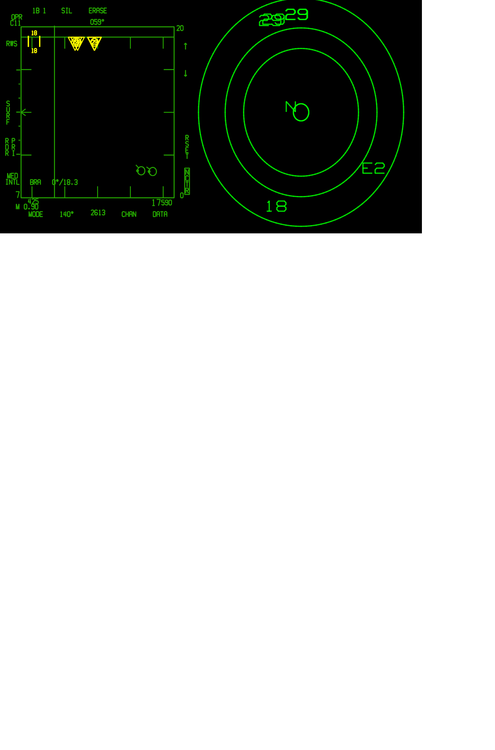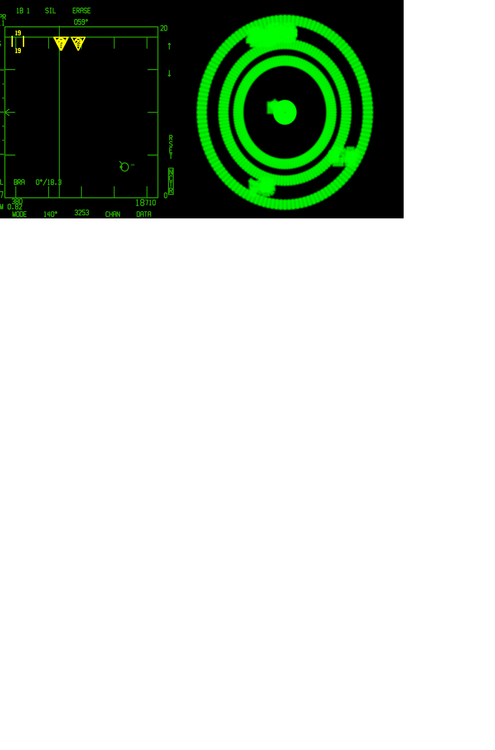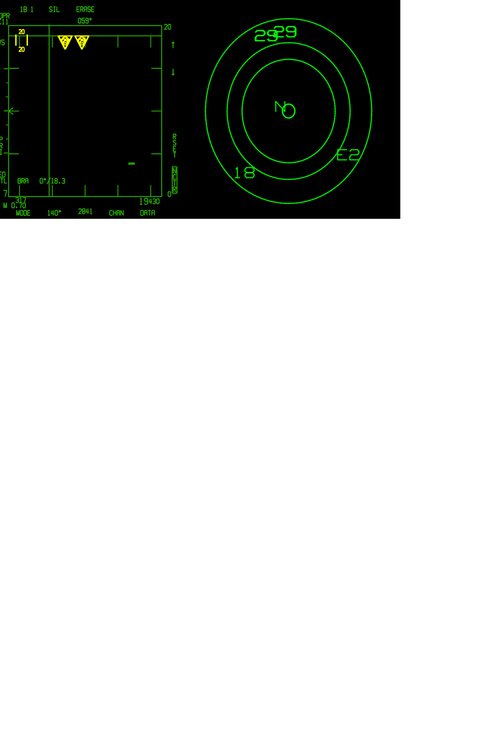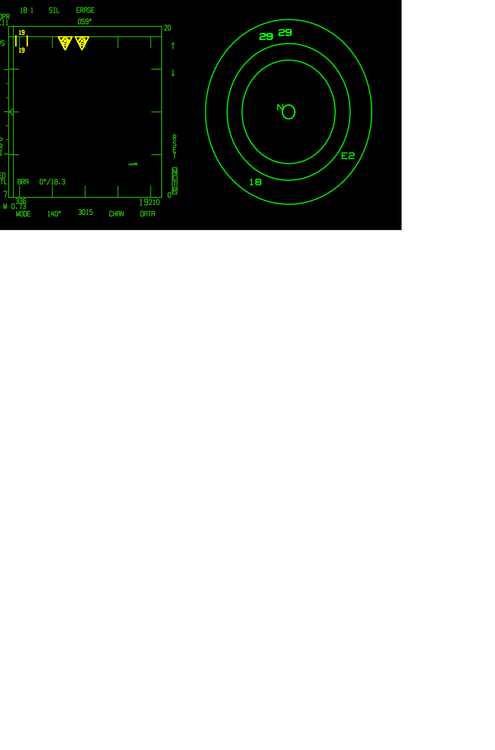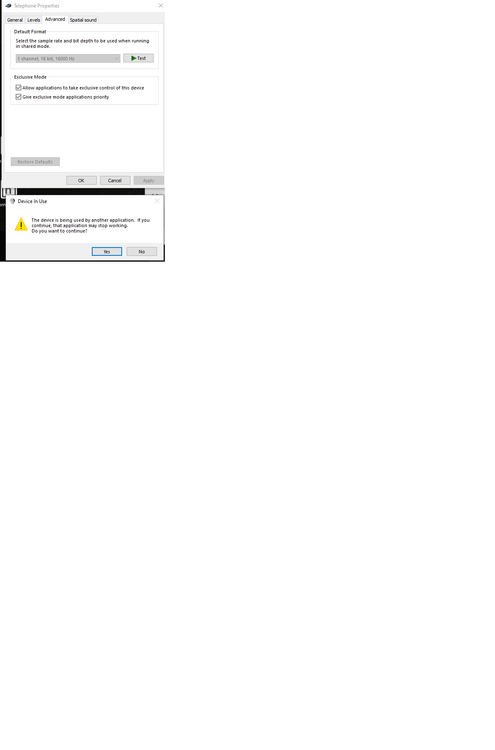

himilou
Members-
Posts
18 -
Joined
-
Last visited
-

Usability in the training missions is just horrible
himilou replied to Deny777's topic in New User Briefing Room
I agree with the basic gripes about the training missions, additionally sometimes you can foobar something so that a control hook is missed and then you need to restart and do it over hoping that you do not screw it up again. It would be nice if eagle dynamics would create downloadable missions, maps and brief html and tranining missions that were also kept up to date. Sure everyone says, create your own but for me at this point that is yet another learning curve that I dont want to undertake until I have some combat pilot chops. Also I should add that it would be nice if eagle dynamics had a specific youtube channel that had the most current training videos and kept them up to date. Third party stuff is great but you never know if you are seeing something that is current, correct, and not outdated. It can be quite frustrating to watch a ton of vids on the same subject becuase as a newbie you dont know if you did it wrong or the video is just out of date. BTW overall I love DCS. It is currently the only game I play and I spend a good deal of time doing it. -
Hey, Well I've only been flying DCS for about a month now, I've owned it for about 3 but spent 2 of those messing around with building my own headtracker before I threw in the towel and bought TrackIr ( glad I did or I would probably not be here now, lol ) So what I have posted is really the very start of me playing with rendering external viewports. I flew tonight with the RWR modded as I outlined above and I immediately noticed that on my exported RWR screen the boat indicator symbol does get rendered correctly. If you look at RWR_ALR_67_Common_definitions.lua you will see function AddBoatHarmSymbols() That pretty much confirms that the rendering of the RWR symbols is done througn the functions in this file, and the function AddThreatSymbol is most likely the one with the bad scaling. These are what would have to be duplicated with different values if what you are pursuing is possible. The reason Im asking about the monitor situation. I've been playing with some code that allows capturing of screen buffer output. Its pretty efficent, I think I experienced only about a 4 frame per second loss capturing the entire DCS main window and rendering its output into a scaled window, without me having to do any fancy DX coding. I then started thinking that if you had a (ghost ) display \ monitor that windows thought was VGA \ SVGA you could tell DCS to render the viewports to that display using the same display[n] code that I posted above for my monitor config. Example: I have two real monitors hooked up. From above primary = { x = displays[1].x - screen.x, y = displays[1].y - screen.y, If a ghost monitor could be presented by windows to DCS ( displays[3] ) Then the exported MFD info could be sent to that display and I could capture only that monitors frame buffer info. Since VGA has far fewer pixels and the MFDs dont require any fancy depth \ overlay \ other rendering pipeline computing the export should result in almost no perf loss. In Windows 7 you could add a non existent VGA monitor and because VGA is not really plug and play windows would give you an unknown display in display manager. This however is good enough for a frame buffer to get created and rendered too. There are youtube videos of people extending their desktop onto android \ apple ipads through this trick and some capture software. Anyhow Windows 10 does not let you fool the system like this without a VGA dongle, though I'm still researching into this. Thats why I asked about the monitor stuff. Maybe you could do an experiment. Attach your dongle to your system and see if windows recognizes it. If it does try using the displays[n] config as outlined above and try exporting a view to the non existent monitor. If a frame buffer gets created then while you wont see the exported info the rest of your display should render as configured. If DCS does not see a frame buffer then it will default to rendering the entire main window across all your recognized display outputs. ( You will also see a LUA config error in your DCS log file ) Cheers!
-
Thanks. Good to meet you! First off let me say that Helios looks pretty great! I have not yet played with it but I have spent some time looking at the captzeen website and the work that has been done on that looks pretty cool. Im headed in a similar but simpler direction, just looking at instrument functionality vs the high quality visual effect that you get with Helios. This is really my first time down the rabbit hole with LUA so Im pretty unclear on variables are available, and the scope in which they exist. That being said I think the answer would depend on exactly how helios is working. Is the monitor that Helios being displayed on under the control of DCS or is it a full helios implimentation? If its under the control of DCS AND Helios basically sets the script changes then you could experiment down the line of what try_find_assigned_viewport does in ViewportHandling.lua local heliosviewport = find_viewport(A_Helios_Defined_RWR_viewport) if heliosviewport then if heliosviewport.x == ( A_SCREENWIDTH_THAT_IS_DIFFERENT) LUAglobalvalueHelios = true and then wrap the rendering code of RWR inside an if then statement. This approach does not fix the actual cockpit RWR though, just gives you more control on the rendering on a different monitor. Now for a completely off base question that you might know the answer to. Does DCS recognize additional monitors \ displayports that windows would consider to be in the detached state? You probably would have run into this in the form of a bug where you thought that helios was on screen n but that output display did not function but setting the output for helios to n+1 or n-1 fixed the issue. Cheers,
-

F18 MFD exports now work with a very quick tweak.
himilou replied to Cowboy10uk's topic in DCS: F/A-18C
I did some experimenting and have some questions which I posted in this thread https://forums.eagle.ru/showthread.php?p=4430822#post4430822 -
So I usually set an MFD to display the RWR output because thats about the only way I can glance at it to get a quick situation assessment, being a rookie. I started playing with exporting the RWR to a viewport on my second monitor along with the 3 MFDs that you can easily export from the F18 and immediately ran into the blurry blob display. I spent some time tinkering around and this is what I have discovered. The RWR seems to be rendered like a regular 3D object, using simple draw commands for the circles and then treating the aircraft indicator marker fonts as a 3D object to be displayed with a solid color texture in the graphics pipeline. Thats why when you set: shaderLineDrawAsWire = true you get an almost double vision effect, you are only seeing the outline of the front and back of the object with no fill. Since the font is being rendered as a 3d object I started experimenting with several of the LUA files and these are the results I've gotten so far ( I've included MFD output for comparison next to the RWR ) First here is my monitor file settings which remains the same for all: if displays and #displays > 1 then spacingwidth = displays[2].width / 4; primary = { x = displays[1].x - screen.x, y = displays[1].y - screen.y, width = displays[1].width, height = displays[1].height, aspect = displays[1].width/displays[1].height; viewDx = 0; viewDy = 0; } secondaryLST = { x = (displays[2].x - screen.x), y = displays[2].y - screen.y, width = displays[2].width / 4, height = displays[2].height / 2, } secondaryLSB = { x = (displays[2].x - screen.x), y = ((displays[2].y - screen.y) + (displays[2].height / 2)), width = displays[2].width / 4, height = displays[2].height / 2, } secondaryRST = { x = ((displays[2].x - screen.x) + (spacingwidth + 10)), y = (displays[2].y - screen.y), width = displays[2].width / 4, --384, height = displays[2].height / 2, --216, } To insert the graphic rendered distance circles which I guess have been replaced by an image overlay I uncommented these from RWR_ALR67_MAIN_page.lua ( just called main ) addStrokeCircle("TEST_CIRCLE", 1, {0, 0}) addStrokeCircle("TEST_CIRCLE_1", 0.74, {0, 0}) addStrokeCircle("TEST_CIRCLE_2", 0.56, {0, 0}) --addStrokeCircle("TEST_CIRCLE_3", 0.19, {0, 0}) addStrokeCircle("TEST_CIRCLE_0", 0.075, {0, 0}) for mod1 just the changes to RWR_ALR67_init.Lua that most people tinker with shaderLineParamsUpdatable = true shaderLineDefaultThickness = 0.06 shaderLineDefaultFuzziness = 0.04 shaderLineDrawAsWire = false shaderLineUseSpecularPass = true Mod2 shaderLineParamsUpdatable = true shaderLineDefaultThickness = 0.06 shaderLineDefaultFuzziness = 0.04 shaderLineDrawAsWire = true --- the only difference shaderLineUseSpecularPass = true Mod3 changes to the RWR_ALR67_definitions.lua file, note the setting of the screensize variable and using it to easily adjust some of the other calculations screensize = ( 0.0128 ) --0.0158 Radius = GetScale() -- half_width Radius = Radius * screensize --0.0158 Diameter = 2 * Radius SetCustomScale(Diameter) stroke_font = "font_RWR" default_material = "RWR_STROKE" --stringdefs = {20 * GetScale(), 12 * GetScale(), 4 * GetScale(), 5 * GetScale()} local fontSz = 0.000025 / screensize -- 14(0.000025) font size/screen size MPDtoALR = 0.000025 / screensize * GetScale() -- 14 0.000025 init file shaderLineParamsUpdatable = true shaderLineDefaultThickness = 0.6 shaderLineDefaultFuzziness = 0.2 shaderLineDrawAsWire = false shaderLineUseSpecularPass = true Mod4 init file shaderLineParamsUpdatable = true shaderLineDefaultThickness = 0.06 shaderLineDefaultFuzziness = 0.04 shaderLineDrawAsWire = false shaderLineUseSpecularPass = true definitions file is the same as mod3 mod5 init file is the same as mod4 definitions file introduces another variable that is used to set fontsize and MPDtoALR -- see 'use_mipfilter' in symbology_defs.lua mip_filter_used = true screensize = ( 0.0128 ) --0.0158 _rwrfntbase = 0.000014 -- originally 0.000025 Radius = GetScale() -- half_width Radius = Radius * screensize --0.0158 Diameter = 2 * Radius SetCustomScale(Diameter) stroke_font = "font_RWR" default_material = "RWR_STROKE" --stringdefs = {20 * GetScale(), 12 * GetScale(), 4 * GetScale(), 5 * GetScale()} local fontSz = _rwrfntbase / screensize -- 14(0.000025) font size/screen size MPDtoALR = _rwrfntbase / screensize * GetScale() -- 14 0.000025 fontScaleY_dflt = fontSz * GetScale() -- 59/0.112 fontScaleY_small = 0.5 * fontSz * GetScale() fontScaleX_dflt = fontSz * GetScale() -- 59/0.112 fontScaleX_small = 0.5 * fontSz * GetScale() So you can see that we can get pretty decent scaling control over the font rendering but none of these settings seems to effect the friend or foe indicators around the lettering ( the ^ for enemy and the half circle for friendly. ) So I dug a little further and discovered that adjusting values in this statement will control the spacing between letters etc, but still no symbology stringdefs[sTROKE_FNT_DFLT] = {fontScaleY_dflt, fontScaleX_dflt, 74 * fontSz * GetScale(), 74 * fontSz * GetScale()} Digging deeper I found this in the f18\scripts\materials.lua file The font file is also specified here but I left that out of this post for clarity. [i]the solid texture color for the symbols[/i] materials["RWR_STROKE"] = {0, 255, 0, 230} -- HMD materials["HMD_SYMBOLOGY_MATERIAL"] = {2, 255, 20, 255} textures = {} local ResourcesPath = LockOn_Options.script_path.."../IndicationResources/" textures["ARCADE"] = {"arcade.tga", materials["INDICATION_COMMON_RED"]} -- Control Indicator textures["ARCADE_WHITE"] = {"arcade.tga", materials["SIMPLE_WHITE"]} -- Control Indicator textures["IFEI_INDICATIONS"] = {ResourcesPath.."IFEI/IFEI_Fixed_Symbology.dds", materials["IFEI_FONT"]} -- Control Indicator -- DBG --textures["INDICATION_MPD_ADI_DBG"] = {ResourcesPath.."MDG/DBG_ADI_background.jpg", materials["DBG_RED"]} [i]The tga shape file which contains the circle and the ^ and other symbols[/i] textures["INDICATION_RWR"] = {ResourcesPath.."RWR/indication_RWR.tga", materials["INDICATION_COMMON_GREEN"]} textures["INDICATION_RWR_LINE"] = {"arcade.tga", materials["INDICATION_COMMON_GREEN"]} textures["INDICATION_TGP"] = {ResourcesPath.."MDG/tgp_texture.tga", materials["INDICATION_COMMON_WHITE"]} Now I think the last issue to this display is that the scaling of the symbols is set for the little RWR in the panel and is too small to be rendered correctly when the RWR is exported. I think the rendering is done with this function from the RWR_ALR67_Common_definitions.lua file function AddSpecialSymbols(name, file, number, stt_y, aaa_y, sam_y, ewarn_x) So does anyone know if scaling values are set in this function and if so how they work? Im going to cross post this in another thread on this but wanted to place it up front for attention as a new thread. Thanks!!
-
Hey all, I'm wondering if there is a way to center trackir using a modifier key, the same way that modifier keys work in the controls input configuration section. I currently use the trackir software to trap keyboard keys for recenter and the trackir software will let you use a single joystick button but I have not seen a way to do it with a modifier key. Any ideas? Also for those on the fence about getting track ir IMHO its well worth the money. I tried building my own setup, 3 different versions with various LED flavors and they work. The value in trackir is in the software, it is substancially better than the open source options in terms of filtering out unwanted light input, and smoothing your movements. Thanks!
-
In your log I see that DCS correctly selects the channels. What I find strange is that in the broken case on my machine DCS selects a different channel ( channel 0 ) and then gets a windows return HRESULT of invalid argument. Not sure why DCS decides to use channel 0 ( which I guessing is not a valid channel number ) instead of 1. In any case I bought a pair of logitec headphones w mic and the sound works perfectly through those now.
-
So until I discovered DCS my gaming was strictly confined to XBOX and computers were for other things. Im currently playing DCS ( and loving it ) on my work machine which is home with me due to covid 19. I happen to have an unused Dell R720 with 128GB ram and dual Intel Xeon E5-2640 6 core 2.5GHZ processors. Anyone have any experience running DCS in a Linux KVM \ QEMU virtual machine with graphics passthrough? My understanding is that a lot of people get great throughput for 3D gaming in KVM, even enough to support running 2 Virtual machines on the same box with passthrough to 2 separate video cards, and Im curious to know if anyone is doing this and if the gameplay is acceptable. Would be a lot better than having to spend $$ on a box just for DCS. Thanks!
-
Im actually playing DCS on my work computer since I've had to bring it home for the covid crisis. It has realtek HD audio using the default OEM drivers that ship wth windows 10 and a plantronics desktop telephone also default drivers. The telephone was my sound device as I dont have any desktop speakers at home. Today I went out and bought a logitec USB headphone and mic and its working great so far. I looked at your log but I dont see an error so it must be from when your sound is working correctly.
-
First off, well crap. I now have no sound at all even after trying my trick and restarting the PC. I double checked the preferred output device in windows and in DCS to no avail. I have a realtek high def audio device. I did try uninstalling realtek software but that made no difference. One thing that is interesting is that in the bad case the log indicates using 0 channels and then throws a Windows HRESULT Invalid Argument. In the good case it shows using 1 channels and works. couple of questions. Do the devs watch this forum for bugs or should I report elsewhere? Can either of you check your old log ( I belive it only saves current and 1 previous launch ) and see if you show using 0 channels? Thanks!
-
I think I use DCS stable, not sure pretty new at this. You can avoid rebooting using the workaround, and you can quickly access the properties dialog of your audio device by right clicking your speaker icon in the systray and selecting troubleshoot.
-
I just upgraded to DCS DCS/2.5.6.49798 Now when I exit the game DCS is somehow hanging on to the audio device. This does not affect audio in other windows applications but it does result in no sound the next time I launch DCS, I will have no sound. I can correct this by opening the properties dialog of the audio device, going to the advanced tab, and clicking the Test button. This will prompt a warning about audio device in use, clicking Yes will generate a test tone. ( see attached png image ) DCS will again work for 1 game cycle but after exit the next time you launch you will have no sound until you repeat the process. relevant log entries When Sound works: 2020-07-05 18:56:39.945 INFO INPUT: Device [TrackIR] created deviceId = -1 2020-07-05 18:56:40.058 INFO SOUND: Using driver: wasapi 2020-07-05 18:56:40.061 INFO SOUND: Found 3 available audio device(s): 2020-07-05 18:56:40.061 INFO SOUND: 0: ID: "{0.0.0.00000000}.{26f68f61-225e-4041-8513-f78d6622e222}", Name: "4 - LEN P27h-10 (AMD High Definition Audio Device)" 2020-07-05 18:56:40.061 INFO SOUND: 1: ID: "{0.0.0.00000000}.{41dcc071-c919-47d3-a0ca-a87e2bc93e9a}", Name: "Telephone (Plantronics P540-M)" 2020-07-05 18:56:40.061 INFO SOUND: 2: ID: "{0.0.0.00000000}.{4f0aea1c-eb92-4a0f-bcd8-0c122201feda}", Name: "Speakers (Realtek High Definition Audio)" 2020-07-05 18:56:49.227 INFO SOUND: Added sound path: Sounds 2020-07-05 18:56:49.279 INFO SOUNDER: Loaded 207 packed sounders. ... ( truncated for brevity Sound entries of adding sound path ) 2020-07-05 18:57:25.169 INFO VISUALIZER: cascade shadows init (preset:'default' quality:1 layers:1 size:1) 2020-07-05 18:57:25.193 INFO SOUND: Opening default audio device. 2020-07-05 18:57:25.204 INFO SOUND: Driver reports 1 channels with mask 0x636164 2020-07-05 18:57:25.204 INFO SOUND: Using 1 channels at 16000 Hz 2020-07-05 18:57:25.204 INFO SOUND: Channel layout: FrontCenter When sound fails: 2020-07-05 19:15:02.672 INFO INPUT: Device [TrackIR] created deviceId = -1 2020-07-05 19:15:02.787 INFO SOUND: Using driver: wasapi 2020-07-05 19:15:02.791 INFO SOUND: Found 3 available audio device(s): 2020-07-05 19:15:02.791 INFO SOUND: 0: ID: "{0.0.0.00000000}.{26f68f61-225e-4041-8513-f78d6622e222}", Name: "4 - LEN P27h-10 (AMD High Definition Audio Device)" 2020-07-05 19:15:02.791 INFO SOUND: 1: ID: "{0.0.0.00000000}.{41dcc071-c919-47d3-a0ca-a87e2bc93e9a}", Name: "Telephone (Plantronics P540-M)" 2020-07-05 19:15:02.791 INFO SOUND: 2: ID: "{0.0.0.00000000}.{4f0aea1c-eb92-4a0f-bcd8-0c122201feda}", Name: "Speakers (Realtek High Definition Audio)" 2020-07-05 19:15:11.880 INFO SOUND: Added sound path: Sounds 2020-07-05 19:15:11.944 INFO SOUNDER: Loaded 207 packed sounders. ( ... truncated for brevity ) 2020-07-05 19:15:48.280 INFO SOUND: Opening default audio device. 2020-07-05 19:15:48.292 INFO SOUND: Driver reports 1 channels with mask 0x0 2020-07-05 19:15:48.292 INFO SOUND: Using 0 channels at 16000 Hz 2020-07-05 19:15:48.292 INFO SOUND: Channel layout: 2020-07-05 19:15:48.295 ERROR SOUND: Failed to Initialize IAudioClient: 0x80070057 (E_INVALIDARG) 2020-07-05 19:15:48.295 ERROR SOUND: Failed to start SND_Renderer. 2020-07-05 19:15:48.295 ERROR SOUND: can't start renderer my audio device is the telephone :( hope this helps, Himilou dcs.log dcsgood.log

